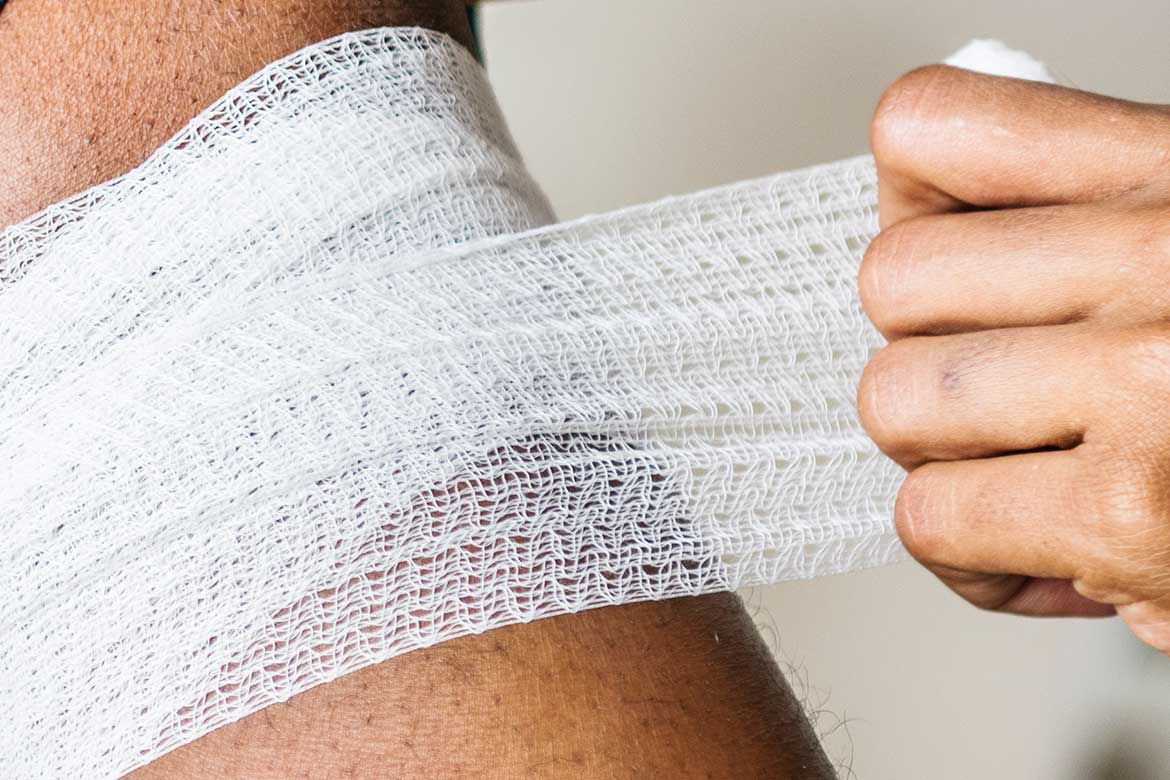6th December, 2023
Prevent An Accident Tomorrow By Reporting One Today
Accidents are preventable. But they do say hindsight is a wonderful thing. It's easier to look back and see that there was a better way, once you have learned from your mistakes. Accident and near-miss reporting can be a proactive safety measure, preventing future accidents.

After you've had an accident, once the initial shock and pain are over, what do you think? Even if it's something minor like a cut, graze, slip or trip?
If you're like me, you might think something like:
"If only I hadn't done that."
"If only I had seen this."
"If only I had taken a different route."
"If only someone had warned me."
Most, if not all, accidents are preventable. And if you had seen that trip hazard, or if you had been 5 minutes later, or if someone had fixed a problem before it became YOUR problem, then you could have avoided the accident.
They do say hindsight is a wonderful thing.
It's easier to look back and see that there was a better way, once you have learned from your mistakes.
But what if there is a way to learn from our mistakes and prevent accidents at work?
Accident reporting as a proactive safety measure 💡
Accident reporting is a reactive safety measure. The accident has already happened - it's too late to stop it.
And many people look at accident reporting as just a reactive health and safety measure. Or even worse, just a way to comply with laws like RIDDOR.
Accident reporting is both those things, but if you only do the minimum with reporting, you don't get the maximum benefit.

Some accidents and incidents require reporting under the reporting of injuries, diseases and dangerous occurrences (RIDDOR) regulations. By law, these must be reported to the HSE to comply with the regulations.
For some organisations, this is where the reporting stops.
Other accidents are put in the accident book, and first aid is given where required but no formal report is made to management – after all, it was only a minor cut and a quick clean and plaster and then everyone could get back to work.
But accident reporting can bring bigger benefits.
Just because an accident isn't RIDDOR reportable, doesn't mean it should be ignored. All accidents and incidents should be reported internally so you can prevent them from occurring again.
Accident and near-miss reporting combined can be a proactive safety measure too. It can act as a way to find problems and fix them, before further, and potentially more serious accidents happen.
One accident is bad, two is worse
Do you know what's worse than one accident? Two!
But if you learn from an accident, no matter how minor, you can prevent other employees from getting hurt. You can learn from the accident to stop it from happening again.
For example, if your employees in a particular office kept banging their head on a shelf placed in an awkward position at head height, but this only ever resulted in a minor cut or no injury at all, it would not be reportable under RIDDOR.
Without an internal reporting system, no report would be made, and higher management might not even become aware of this problem.

Over time, those employees working in that office might even stop banging their heads, they have become aware of the hazard and will no doubt take action to avoid it - no one likes a bump to the head!
Problem solved? Well, no. Sure, your employees who are aware of the hazard will avoid it, but what about when new people start, what about visitors?
What if your new employee whacks their head on that shelf, and it knocks them off balance, so they fall down the stairs, breaking a bone on the way down?
This shelf was in a silly place!
Now you have a RIDDOR reportable accident on your hands, not to mention all the costs associated with accidents, along with the guilt of seriously injuring your newest staff member.
Okay so, if you had an internal accident reporting system in place, including reporting near misses, could this have prevented this serious accident from occurring?
Yes...
You could have moved the shelf after the first knock on the head!
Use the accident report form to report an accident in your workplace, and stop it from happening again.
It's like protecting your future self. A warning for tomorrow, to do something differently.
Near-miss reporting is like having a crystal ball 🔮
The same benefits apply to near-miss reporting. Except, you don't need to have the first accident!
A near miss is an event that could have been an accident. It had the potential to cause harm. But it didn't. For example, a trip or slip where you were not hurt, but could have been.
And near miss reporting can stop accidents just like accident reporting - but without an accident.
With near-miss reporting, you can stop an accident before anyone gets hurt - and you don't get much better than that!
Here are 5 examples of how near-miss reporting can stop accidents before they happen.
Instead of waiting for an accident to happen, with near-miss reporting, you and your team report any events that could have been an accident.

Someone tripped over a cable? That's a near-miss. A tool fell from a working platform? That's a near-miss.
If near-misses get reported, now you know about the problems before they hurt someone.
And if you fix the problems creating those near misses, for example, you move the cable, or put guards on the platforms, then you can prevent the accident that might happen next time.
Because near misses mean accidents will follow.

How to start reporting today
We said you can prevent an accident tomorrow by reporting one today - and we really did mean today!
It's easy to get near-miss reporting in place. You can even download the free near-miss report template to get started quickly.
And it only takes a couple of minutes for someone to report a near miss or health and safety concern.
Of course, just reporting an accident or near miss isn't the end of the process. But it does make you aware of areas of risk within your workplace.
By gathering information on minor accidents and near misses, you can take action as soon as an uncontrolled hazard or unsafe situation becomes apparent.
You can put in place control measures or eliminate the hazard, and protect your workforce from further incidents. Some reports might only need a quick, simple and cheap solution. Others might be slightly more complex or take a longer time to resolve.
You can tackle the most serious problems right away. And with the reports you receive, you will know about other issues you need to solve in the future.
You can fix problems before they even become a problem. Win, win, for you and the safety of your team.
Use the free near miss report template for your workplace. If you need help implementing an internal reporting system for accidents and incidents within your business, check out health and safety forms.
This article was written by Emma at HASpod. Emma has over 10 years experience in health and safety and BSc (Hons) Construction Management. She is NEBOSH qualified and Tech IOSH.
Better health and safety...
We are here to help you and your business put safety in everything.
Learn MoreRecent posts like this...

HSE Fee For Intervention Charges Explained
FFI stands for 'fee for intervention', which was introduced under the Health and Safety (Fees) Regulations 2012. FFI aims to recover the HSE's costs, including inspection, investigation and enforcement action, charging businesses that are in breach of health and safety regulations.
Read Post
How To Plan For Better Health And Safety At Work
If you want better health and safety, you need to plan for it. And who doesn't want to stay safer and have fewer accidents and ill health in their workplace? In this blog post, we look at how to plan for better health and safety at work.
Read Post
No Injuries, No Health And Safety Problems!?
It's been over a year since the last injury in your workplace. But just because you haven't had any accidents doesn't mean you are safe or that your health and safety performance is good. Your accident reporting system might just be hiding the truth. No injuries, no problems!? Don't count on it.
Read Post